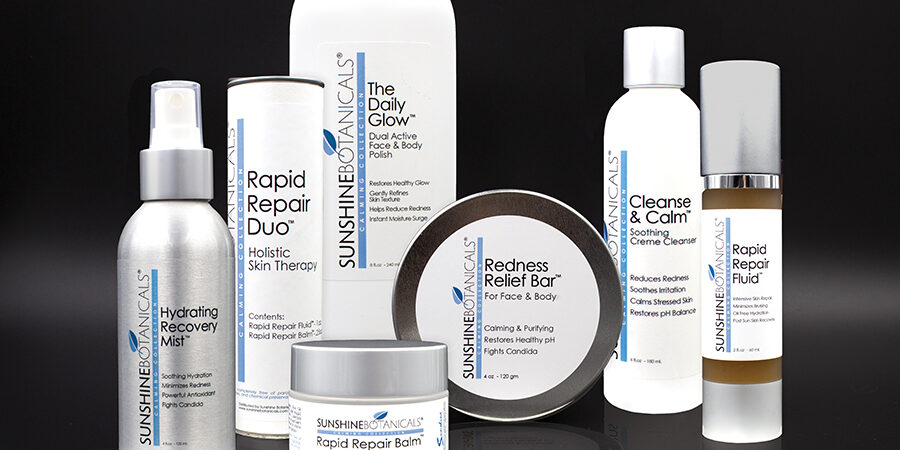The following post is by Emily Fritchey, founder of Sunshine Botanicals and The Skin Whisperer.
The danger of chronic, low-level inflammation is that its silent nature belies its destructive power. In fact, stress-induced inflammation, once triggered, can persist undetected for years, or even decades, propagating cell death throughout the body. Due to the fact that it contributes so greatly to deterioration associated with the aging process, this silent state of chronic inflammation has been coined “inflammaging”.
“After the sun, inflammation is the skin enemy number one,” says David J. Leffell, professor of dermatology and dermatologic surgery at Yale School of Medicine. Technically, inflammation is a necessary self-defense mechanism – the immune system’s response to infection, irritation, or injury. “The body produces inflammatory substances, such as histamines and cytokines, and blood vessels swell, sending immune cells to the skin to kill bacteria,” says Bryan B. Fuller, adjunct professor of biochemistry and molecular biology at the University of Oklahoma Health Science Center in Oklahoma City. It’s a kind of scrimmage, then, at a cellular level, with bacteria and viruses the losers (one hopes). With foreign invaders vanquished, healing can begin. The problem is that sometimes, thanks to genetic and environmental factors, inflammation becomes chronic. Like a runaway train, it gains speed (stimulating production of skin-eroding enzymes) and mows down everything in its path (collagen, elastin). While there are obvious states of inflammation, like a pimple or a rash, we may not even be aware that our bodies are on “red alert”.
Inflammation is the first response of the immune system to infection or irritation. Without inflammation, we won’t be able to survive in a hostile world infested with dangerous microorganisms. In fact, people whose capacity for inflammation is suppressed (by drugs or due to immune system malfunction) could develop life-threatening infection even from ordinarily innocuous microorganisms. Inflammation involves a number of responses aimed at destroying or at least slowing down invading pathogens.
Inflammation is characterized by a number of phenomena, including increase in local blood flow, migration and activation of the immune cells in the affected area, release of large amounts of free radicals, destruction of normal tissue, deposit of scar tissue and so-forth.
Ideally, inflammation should clear out the infection and then subside to allow normal tissue to be rebuilt. If infection remains, inflammation may become chronic and linger for weeks or even years. Sometimes, chronic inflammation may persist even without significant infection – either because the inflammation response has become too sensitive or because the immune system begins to perceive some of the body’s own tissues as foreign. As it turns out, aging is associated with the increase in both of these unwelcome forms of chronic inflammation. As we age, we tend to develop autoimmune conditions as well as other forms of chronic inflammation. The majority of older people have some degree of low-grade inflammation and/or mild autoimmune disorders (and some have moderate or severe forms, of course). It is no wonder that chronic inflammation contributes to the aging process because it floods tissues with free radicals and promotes the destruction of normal cells. Like most mechanisms of
aging, chronic inflammation creates a vicious cycle. The aging process tends to increase the level of chronic inflammation and that, in turn, accelerates aging.
Click the photo below to see Sunshine Botanicals Calming Collection for solutions to inflammation!



